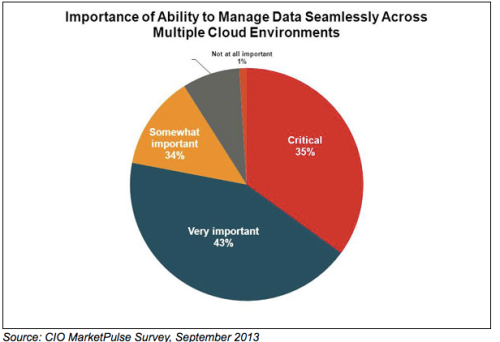Last week, I had the opportunity to attend the Amazon Re:Invent conference in Las Vegas. Over 13,000 people took over the Palazzo for deep dive technical sessions to learn how to harness the power of Amazon Web Services (AWS).  This show had a much different energy than other enterprise software conferences, such as VMworld. Whereas most conferences feature a great deal of selling and marketing by the host, Amazon Re:Invent was truly more of a training show. Cloud architects spent a lot of time in technical bootcamps learning how AWS works and getting certified as administrators.
This show had a much different energy than other enterprise software conferences, such as VMworld. Whereas most conferences feature a great deal of selling and marketing by the host, Amazon Re:Invent was truly more of a training show. Cloud architects spent a lot of time in technical bootcamps learning how AWS works and getting certified as administrators.
That is not to say that there was no selling or marketing going on; the exhibition hall featured myriad vendors that augment or assist with AWS deployments and solutions. The focus on the deep technical details, though, does point out the fact that we are still in the very early days of the cloud. Most of the focus of the keynotes was about getting compute workloads to the cloud – there was not a lot of mention of moving actual data to the cloud, even though that is certainly beginning to happen. But, that is how the evolution goes. IT departments need to be comfortable moving workloads to the cloud as they begin to leverage the cloud. Building this foundation is also important to Amazon – the goal would be for many companies to completely outsource the IT data center.
It is important, however, to proactive plan for information management as more workloads and, importantly, data move to the cloud. As the internet first emerged, companies dove into new technologies like email and network file shares only to create eDiscovery nightmares and make it virtually impossible to find information within digital landfills. It is key to learn from those mistakes rather than to repeat them when leveraging cloud-based technologies. In order to ensure both that end-users are happy with search experiences on data in the cloud and that Legal can do what they need to do from an eDiscovery standpoint. This means providing business workers with unified access to email, files, and SharePoint information regardless of where the data lives. It also means giving Legal teams fast search queries and collections. But, Cloud search is slow, as indexes live far from the information. This results in frustrated workers and Legal teams afraid that eDiscovery cannot be completed in time.
If a customer wanted to speed up search, it would have to essentially attach an appliance to a hot-air balloon and send it up to the Cloud provider so that the customer’s index could live on that appliance (or farm of appliances) in the Cloud providers data center, physically near the data. There are many reasons, however, that a Cloud provider would not allow a customer to do that:
- Long install process
- Challenging Pre-requisites
- 3rd party installation concerns
- Physical access
- Specific hardware requirements
- They only scale vertically
The solution to a faster search is a cloud-deployable search application, such as X1 Rapid Discovery. This creates a win-win for Cloud providers and customers alike. As enterprises move more and more information to the Cloud, it will be important to think about workers’ experiences with Cloud systems – and search is one of those user experiences that, if it is a bad one, can really negatively affect a project and cause user revolt. eDiscovery is also a major concern – I’ve worked with organizations that moved data to the cloud before planning how they would handle eDiscovery. That left Legal teams to clean up messes, or more realistically, just deal with the messes. By thinking about these issues before moving data to the cloud, it is possible to avoid these painful occurrences and leverage the cloud without headaches. At X1, we look forward to working closely with Amazon to help customers have the search and eDiscovery solutions they need as more and more data goes to AWS.




